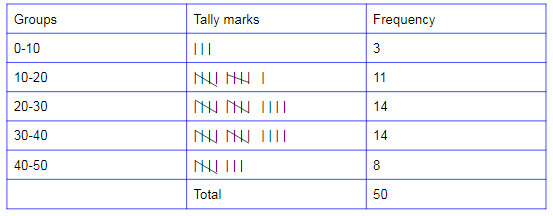

However, as you’ll quickly discover, the options you have in SSMS for managing a database are quite limited compared to what’s available for relational databases-or even SSAS multidimensional databases. In SSMS, you can manage your tabular databases as well as query the data in them. If you find it listed there, you’re good to go. Then, in Object Explorer, expand the Databases node to display the database. Once you get all the pieces in place and the AdventureWorks Tabular Model SQL 2012 database deployed to the SSAS instance, open SSMS and connect to that instance.
#TABULAR DATA DEFINITION HOW TO#
For details about how to set up the project in SSDT, configure the necessary settings, and deploy the database, see the TechNet article “ SQL Server Samples Readme.” You download the project from the same AdventureWorks CodePlex site where you download the data warehouse.


#TABULAR DATA DEFINITION INSTALL#
For information about setting up SSAS in tabular mode, see the MSDN topic “ Install Analysis Services in Tabular Mode.” An instance of SSAS 2012 installed in tabular mode.You can download the database from the AdventureWorks CodePlex site. An instance of the SQL Server 2012 database engine with the AdventureWorksDW2012 database installed.If you want to do so as well, you’ll need several components in place: To demonstrate the various concepts in this article, we deployed the AdventureWorks Tabular Model SQL 2012 sample database to a local instance of SSAS in tabular mode. However, before we start looking at SSMS, we need to provide a bit of setup information. Working with a Tabular DatabaseĪfter a tabular database has been deployed to an SSAS tabular instance, you can use SSMS to connect to that instance and its databases.
#TABULAR DATA DEFINITION SERIES#
Our plan is for this to be the first of a series of articles about accessing a tabular database deployed to an SSAS instance. You’ll learn about the components that make up a tabular database and the methods available to connect to the database to retrieve its data. We’ll introduce you to the tabular model through the eyes of SQL Server Management Studio (SSMS). What has not garnered nearly as much attention is what to do with a tabular database once it’s been deployed. Since the release of SQL Server 2012, much has been written about how to use SQL Server Data Tools (SSDT) to create a tabular model and deploy it to an instance of SSAS in tabular mode. Together these elements create a database that is fast and efficient and can deliver self-service business intelligence (BI) to a variety of applications, including Excel, PowerPivot, Power View and SQL Server Reporting Services (SSRS). Like a cube, the model also supports measures and key performance indicators (KPIs). Like a database, the tabular model supports tables and their relationships. You can think of the tabular model as a cross between a SQL Server relational database and an SSAS multidimensional cube. When Microsoft released SQL Server 2012, they introduced the SQL Server Analysis Services (SSAS) tabular model, an in-memory database that uses the xVelocity analytics engine and state-of-the-art compression algorithms. Getting Started with the SSAS Tabular Model - Simple Talk Skip to content


 0 kommentar(er)
0 kommentar(er)
